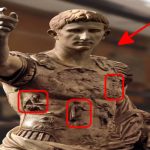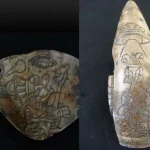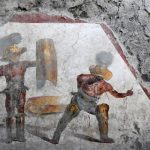Giambologna’s “Hercules and the Centaur” unveiled.
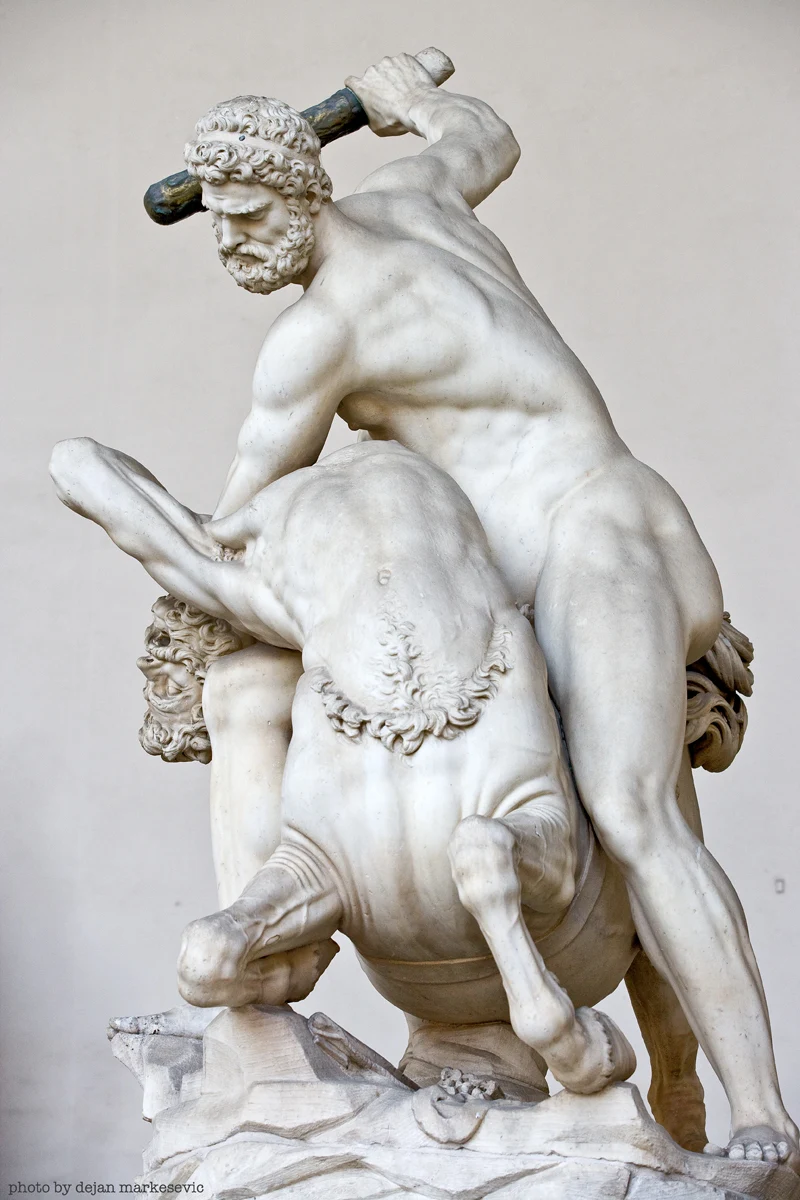
In the heart of Florence, Italy, amidst the grandeur of the Loggia dei Lanzi, resides a masterpiece of Baroque sculpture that continues to captivate and inspire: “Hercules and the Centaur” by the renowned artist Giambologna. Crafted during the Baroque period around 1600, this marble sculpture stands as a testament to Giambologna’s unparalleled skill and artistic vision.
“Hercules and the Centaur” depicts a dramatic and visceral moment from Greek mythology, where the hero Hercules engages in a fierce battle with a centaur, a creature with the body of a horse and the torso, head, and arms of a man. The sculpture exudes an extraordinary sense of movement and emotion, capturing the intensity of the struggle between these two powerful beings.
Giambologna’s mastery is evident in the dynamic composition of “Hercules and the Centaur.” The figures are intricately intertwined in a dramatic confrontation, their muscular forms and taut expressions conveying the physical and emotional turmoil of combat. Hercules, depicted with heroic vigor, exerts his strength in a determined effort to subdue the wild and formidable centaur.

The realism and detail of the sculpture are striking, from the flowing drapery that enhances the sense of motion to the meticulously rendered anatomy that emphasizes the raw power and vulnerability of the figures. Each aspect of the sculpture, from the sinewy muscles to the expressive faces, invites viewers to witness a timeless battle of mythological proportions brought to life in marble.
The choice of marble as the medium for “Hercules and the Centaur” further underscores Giambologna’s technical prowess and artistic finesse. The translucent quality of the marble, expertly sculpted to capture light and shadow, enhances the sculpture’s dynamic presence within the Loggia dei Lanzi, where it stands among other masterpieces of Renaissance and Baroque art.
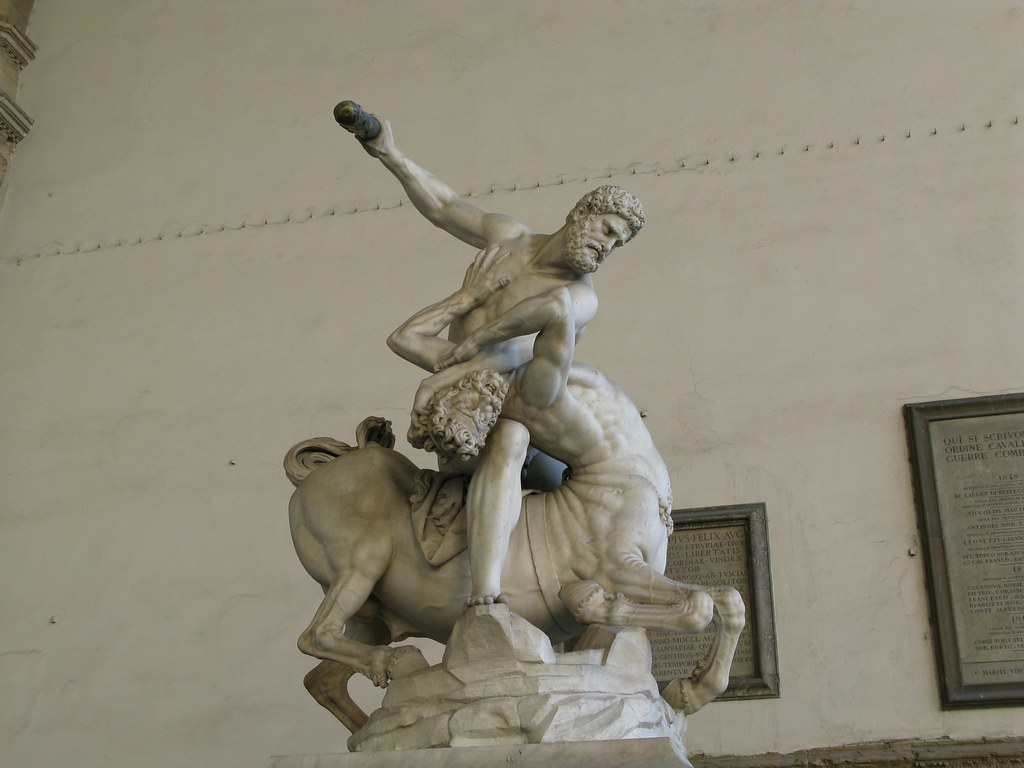
The Loggia dei Lanzi itself serves as a fitting setting for Giambologna’s masterpiece, providing an open-air gallery where visitors can immerse themselves in the beauty and grandeur of Florentine art and architecture. Originally built in the 14th century as a public gathering place, the loggia has become a sanctuary for some of Italy’s most celebrated sculptures, including works by Cellini, Ammannati, and of course, Giambologna.
Beyond its aesthetic appeal, “Hercules and the Centaur” embodies deeper themes of heroism, myth, and the eternal struggle between civilization and primal forces. It invites contemplation on the complexities of human nature and the enduring relevance of ancient stories in shaping cultural identity and artistic expression.
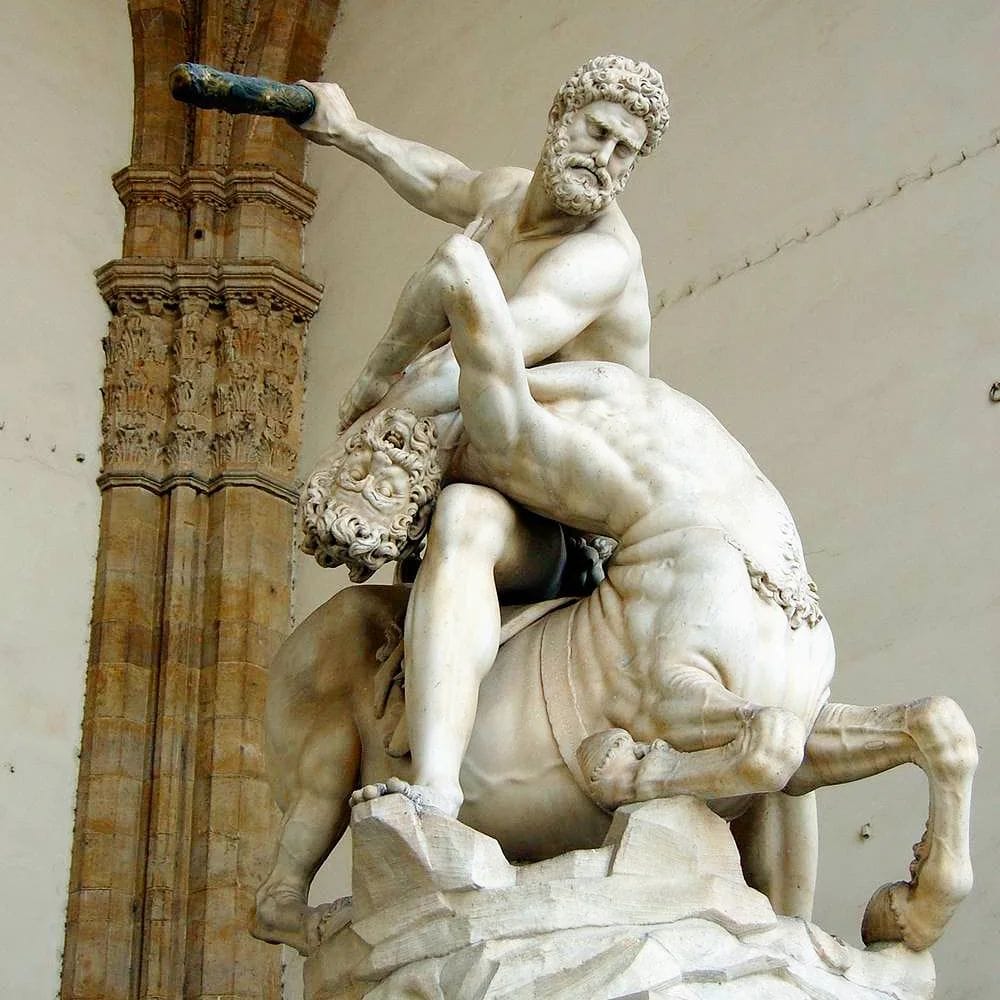
As visitors to Florence behold “Hercules and the Centaur” in the Loggia dei Lanzi, they are transported back in time to an age of artistic innovation and intellectual fervor. They witness firsthand the genius of Giambologna, whose ability to capture the essence of mythological drama in marble continues to resonate across centuries and continents.
In encountering “Hercules and the Centaur,” one not only appreciates the technical virtuosity of Giambologna but also gains a deeper appreciation for the transformative power of art to transcend time and space, inspiring wonder and contemplation in all who behold its splendor.


